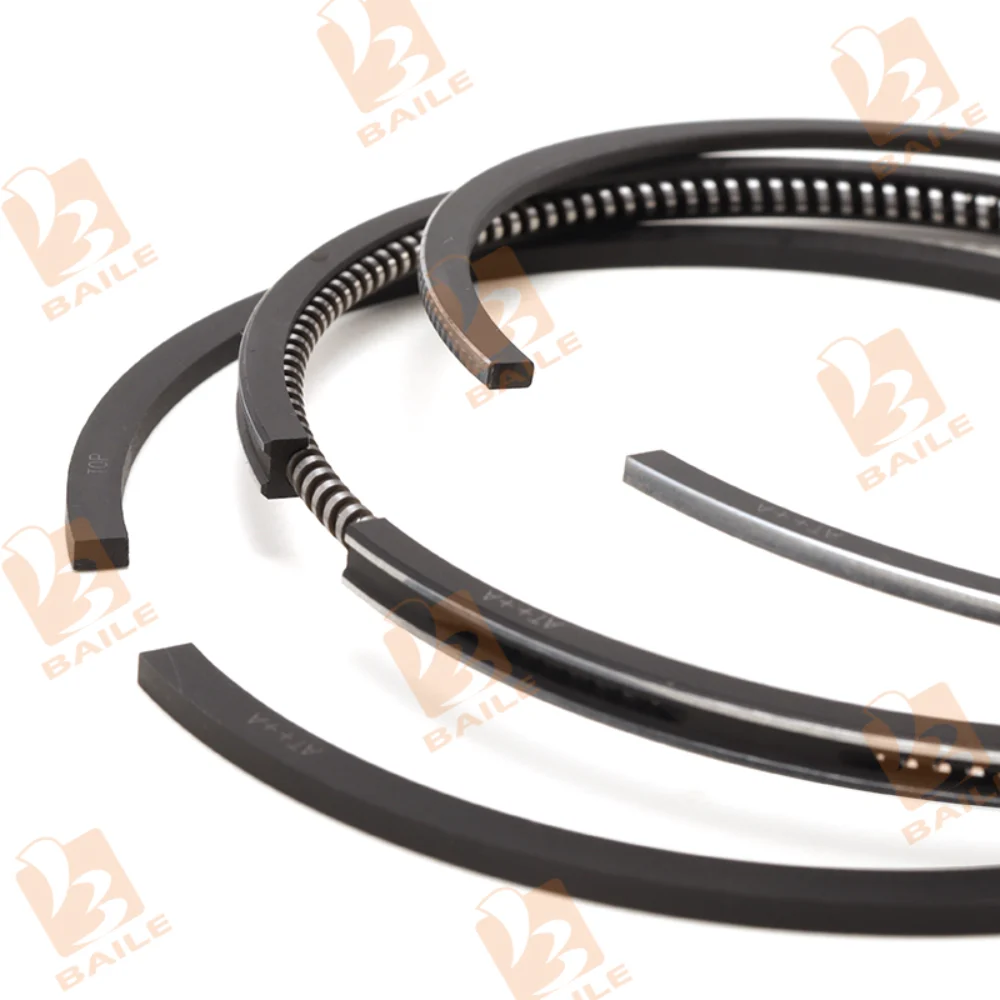Function And Working Principle Of Piston Ring
Piston rings are usually divided into two categories: air rings and oil rings.
The air ring is mainly responsible for sealing the combustion chamber to prevent high-temperature and high-pressure gas from leaking into the crankcase, thereby improving the thermal efficiency of the engine. At the same time, the air ring also conducts most of the heat absorbed by the top of the piston to the cylinder wall, which is taken away by the cooling system to play a heat dissipation role.
The oil ring is responsible for regulating the engine oil, scraping off the excess oil on the cylinder wall when the piston moves downward, and forming a uniform oil film when it moves upward, which not only prevents the engine oil from entering the combustion chamber but also reduces the friction resistance between the piston and the cylinder wall.
During the working process, the piston ring is affected by high-temperature and high-pressure gas, especially the first air ring, whose operating temperature can reach 600K. Therefore, the piston ring needs to have good elasticity, high strength, and wear resistance to ensure that it can still effectively seal and conduct heat during high-speed movement.

Why is the piston ring not completely closed?
The piston ring is not completely closed when designed but has a certain end gap (opening gap), generally 0.25~0.50 mm. This is to cope with the dimensional changes of the piston ring due to thermal expansion when the engine is running and to prevent the piston ring from getting stuck or broken due to thermal expansion and contraction. In addition, the piston ring must have appropriate side clearance and back clearance to ensure that it can move freely in the piston ring groove and maintain good sealing and lubricity.
Common symptoms of piston ring damage
When the piston ring fails, the following symptoms are usually exhibited:
1. Power reduction: Piston ring wear or damage leads to insufficient cylinder pressure, incomplete combustion, and a significant decrease in engine power.
2. Increased oil consumption: Decreased sealing performance allows oil to enter the combustion chamber, resulting in oil burning and blue smoke from the exhaust pipe.
3. Abnormal exhaust: Incomplete combustion or oil burning causes black or blue smoke from the exhaust pipe.
4. Abnormal engine noise: Piston ring breakage or jamming may cause abnormal noises such as knocking.
5. Severe carbon deposits: After the oil enters the combustion chamber and burns, carbon deposits are formed, which may cause the piston ring to get stuck.
-scaled-e1747647388973.webp)
Common causes of piston ring damage
Piston ring damage may be caused by a variety of factors, mainly including:
Wear
Normal wear: As the engine runs, the friction between the piston ring and the cylinder wall will gradually wear the piston ring. This wear is inevitable, but it can be slowed down by proper lubrication and regular maintenance.
Abnormal wear: Damaged air filter or poor sealing of the intake system allows abrasive particles such as dust and sand to enter the cylinder, accelerating the wear of the piston ring and cylinder wall.
Poor lubrication: Insufficient or poor quality lubricating oil will cause the oil film between the piston ring and the cylinder wall to be destroyed, aggravate wear, and even cause the piston ring to stick.
Overheating: Long-term high-temperature operation of the engine may cause the piston ring to deform, reduce sealing, and affect engine performance.
Knock combustion: Poor fuel quality or improper ignition timing may cause knock combustion, and the high temperature and high pressure generated may cause the piston ring to break or the piston ring groove to be damaged.
Improper installation: If the piston ring is not installed correctly during assembly, it may cause the piston ring to break or the sealing performance to decrease.
Contact Us for Professional Help
Although the piston ring is small, it plays a vital role in the engine. Understanding its working principle and common faults will help to find problems in time, take effective maintenance measures, and extend the life of the engine. When selecting and replacing piston rings, it is recommended to use reliable quality products and have them installed by professionals to ensure the best performance of the engine.
As a professional engine parts supplier, Baileparts provides a variety of high-quality piston rings to meet the needs of different engines. For more engine parts, please visit the official website of BAILEPARTS.

